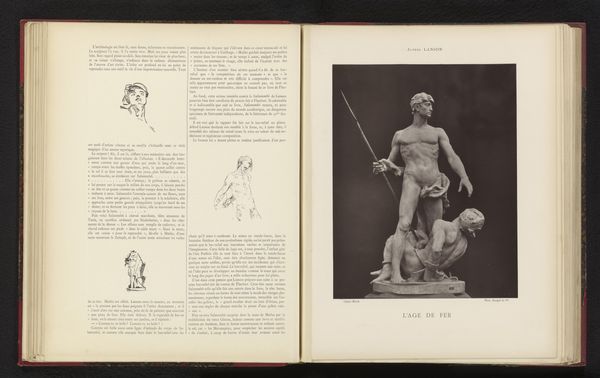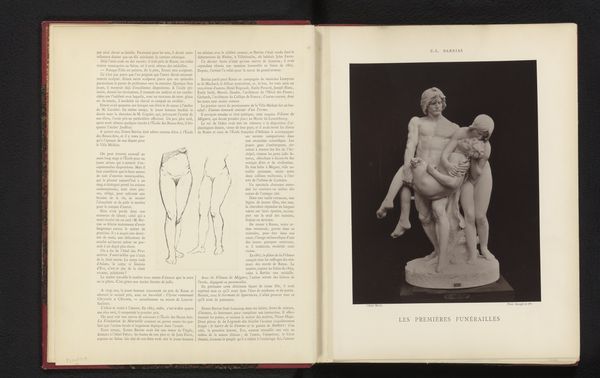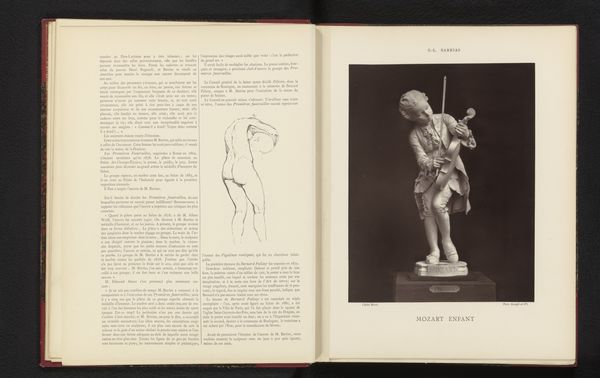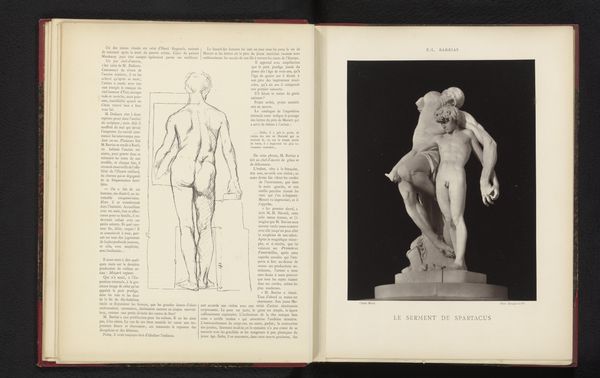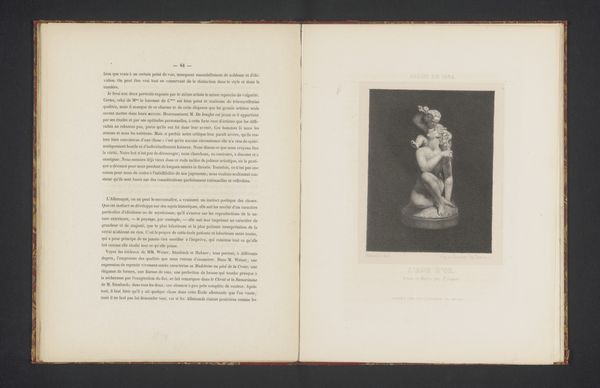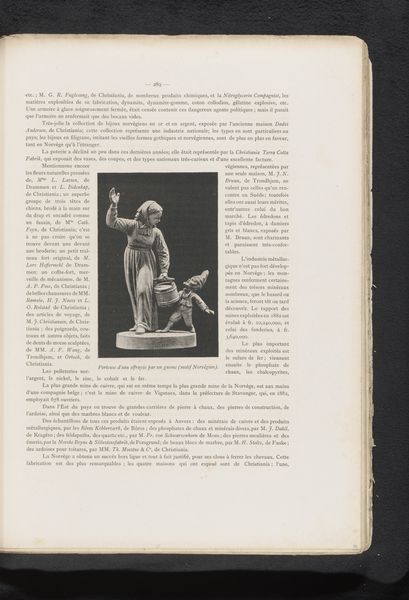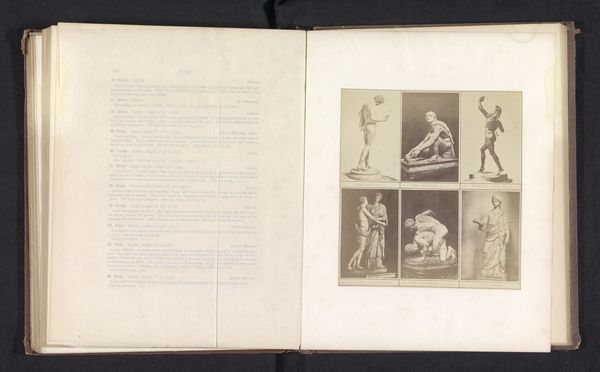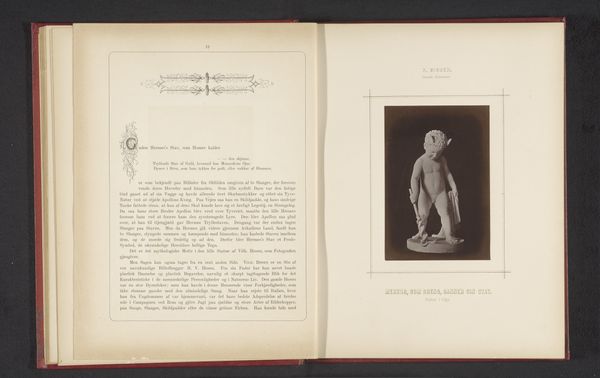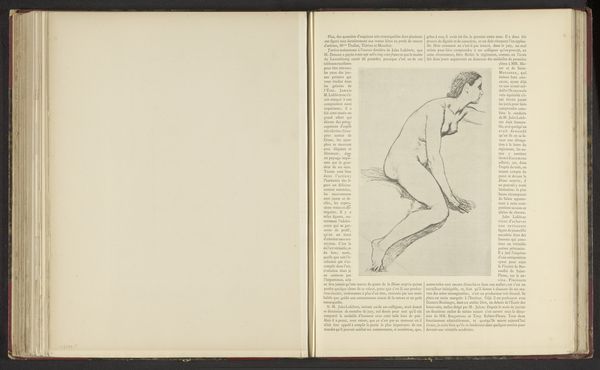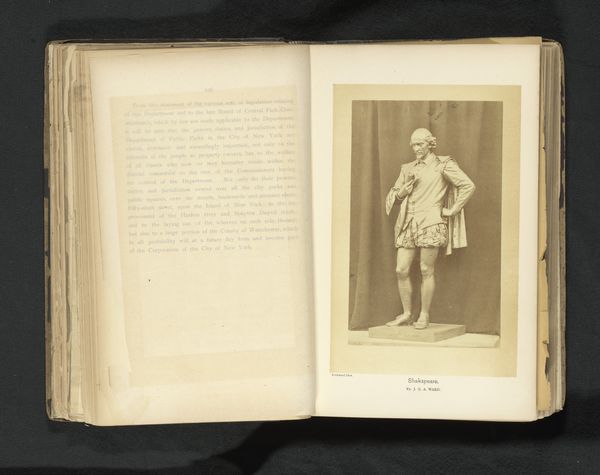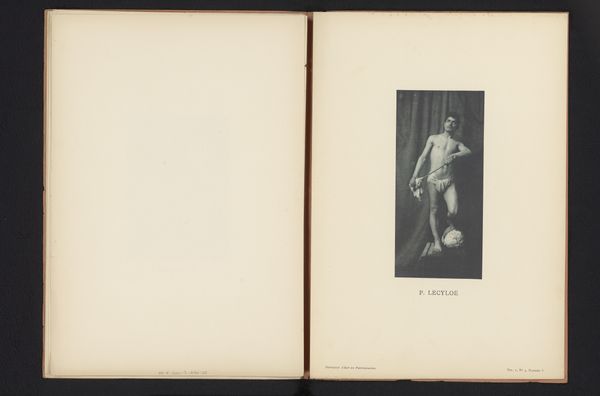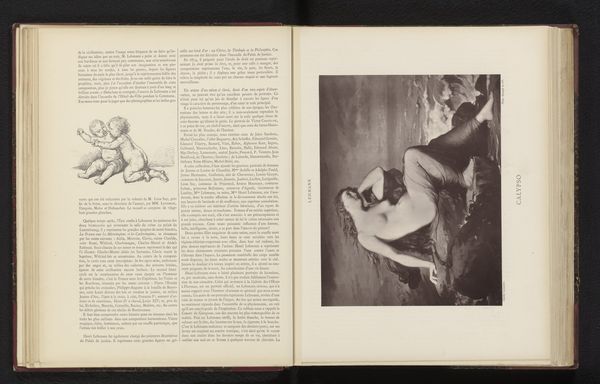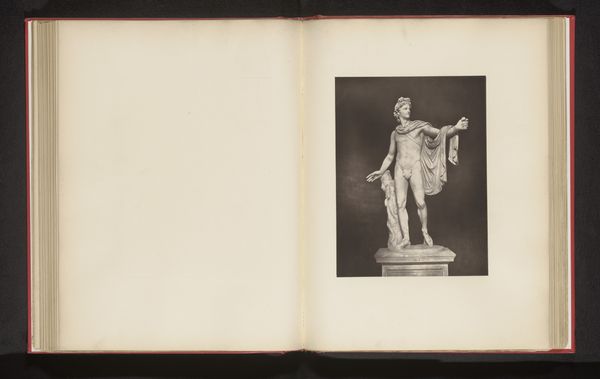
print, photography, sculpture
#
portrait
# print
#
book
#
greek-and-roman-art
#
photography
#
sculpture
Dimensions: height 141 mm, width 103 mm
Copyright: Rijks Museum: Open Domain
Curator: This print, titled "Rustende satyr door Praxiteles in de Vaticaanse Musea," offers an interesting look at how classical forms circulated through the late 19th century. Editor: The photograph sits open in what appears to be an old book, capturing the statue of the resting Satyr. What immediately strikes me is how this image merges tactile sculpture with photographic reproduction—the cold marble made somehow more approachable. Curator: Absolutely, this juxtaposition of the antique statue rendered through photography gives it a new dimension. It creates layers of interpretation: the original Greek sculpture, the Roman copy in the Vatican, the photographic medium of the 19th century and of course, its presentation within a book of reproductions. Editor: This process highlights a changing dynamic. Greek sculpture, for centuries the preserve of the elite, available only through direct experience or commissioned copies, now captured and disseminated via print and photography. Consider also that books themselves have specific material realities—paper quality, binding techniques, printing processes… all pointing towards specific conditions of consumption. Curator: And we shouldn’t ignore the symbolic presence of the Satyr. He embodies the liminal spaces between humanity and nature. Notice how he nonchalantly drapes the animal hide. His softened features hint at indulgence and leisure but within the overall canon of classical ideals, this particular representation emphasizes grace and accessibility over strict, masculine, heroism. Editor: Yes, this softened ideal aligns well with the possibilities inherent to reproductive media like print and photography, lending itself toward the production of more accessible imagery for broader consumption and social circulation. It speaks of how technology enables shifts in class dynamics, influencing consumption of aesthetic traditions. Curator: A fascinating consideration, underlining that beyond just artistic merit, there were distinct economic, social, and technological systems enabling, transforming, and circulating art. Editor: Exactly. Looking closer, even the type of binding, page gilding, and paper used communicate socio-economic and cultural standing—a whole system materialized. Curator: So we see an encounter with antiquity but mediated through layers of cultural and technological shifts, reminding us about how art objects become imbued with deeper meaning as they move through time. Editor: And, that the material processes that transmit this ‘art’ is always reflective of certain people and times.
Comments
No comments
Be the first to comment and join the conversation on the ultimate creative platform.
